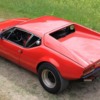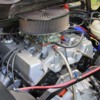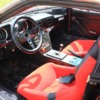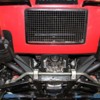Hello,
I would like to show the attached pictures of a Pantera available for sale in Europe, [serial # in the title]. Asking price is around 120.000 USD.
I'd like to get more information on her, (if any is available), and most of all whether she is a USA version or a European version. Is the engine number enough to determine which type of engine it is ?
Thanks for your answers.
Attachments
Original Post





